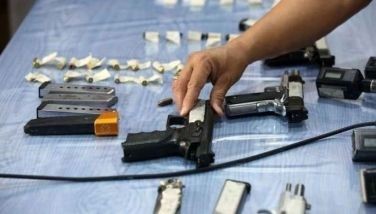DPWH plans to construct 680-meter dike in Quezon
Amid constant threats from tropical storms, the Department of Public Works and Highways (DPWH) wants to reduce possible disasters, especially in the eastern seaboard of
The DPWH plans to start building the 210-meter portion of the dike next month to protect communities along the banks of the
Engineer Gil Iturralde, of the DPWH’s Flood Control Engineering Division, said the construction of the 210-meter portion of the dike would cost some P10 million to be taken from the department’s budget.
Iturralde said the remaining 470 meters of the dike would need P21 million, and they hope that it could be funded under the DPWH’s regular engineering budget or by a congressman’s pork barrel.
“During the 2004 disaster, when typhoons Winnie, Yoyong, Violeta, and Unding hit the country, the
He said the monitoring of the “complicated hydraulic phenomena” in
The simulation facility, funded by the Japan International Cooperation Agency (JICA), enabled DPWH technical experts to collaborate with Japanese experts in developing the project.
In the long-term, Iturralde said the permanent dike along the Kinanliman River would include a slit-type sabo dam that would trap logs from upstream, and a 10-square-kilometer catchment area with a 25-year safety level.
Iturralde said the design of the slit-type sabo dam to be made of steel or concrete would cost some $50 million.
He said they hope to seek JICA funding for the sabo dam project, which might start after 2009.
Engineer Michael Alpasan, of the FCSEC, said an average of 21 typhoons affect the country every year with an average annual rainfall of about 2,400 mm.
He said annual flood damage accounts for two percent of the government’s annual budget.
From 1980 to 2004, he said flood damage had translated to $1.93 billion in economic losses. An average of 900 people die in floods every year.
Citing these statistics, Alpasan said there is a need for continued investment in flood control systems.
Engineer Resito David, FCSEC director, lamented that the country’s flood control program has been “very slow” due to lack of technology and resources.
The budget for flood control has remained small compared to those for roads and bridges, he added.
The first phase of the JICA-funded technical cooperation project to strengthen the flood management function of the DPWH ran from 2000 to June 2005. Its second phase started in July 2005 and will end in June 2010.
The setting up of the P300-million FCSEC in 2003, which serves as a hydraulic laboratory where computer simulations of flood-prone areas are conducted, is part of the technical cooperation project.
Japanese and Filipino experts are also involved in flood risk assessment and flood mitigation planning.
- Latest
- Trending


























